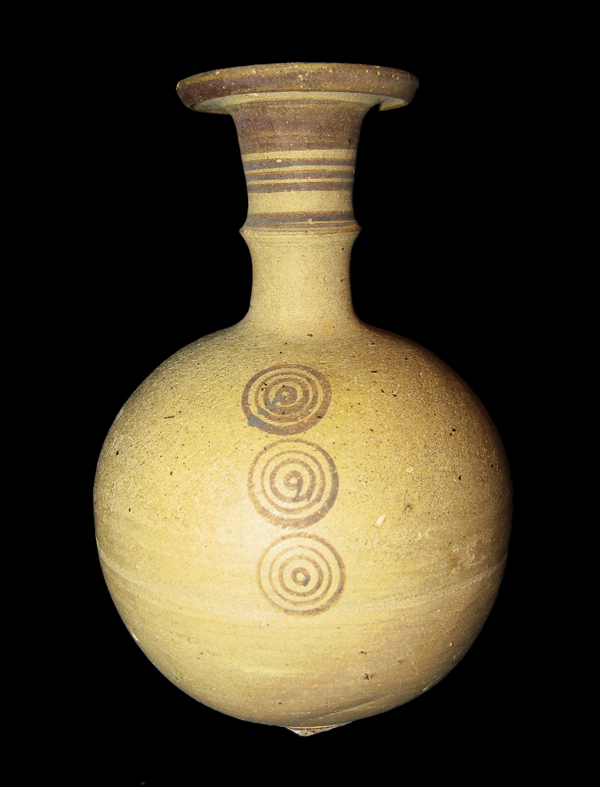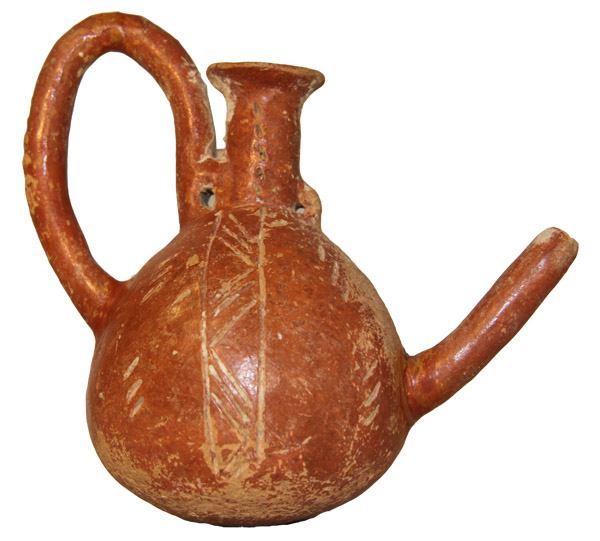The Mediterranean Sea was the main shipping and travel route of the ancient world. The Aegean Sea is the portion which is located between Greece and Turkey. The Aegean Islands encompass the North Aegean Islands, the Cyclades, the Dodecanese and Crete, among others. The Aegean Islands were home to a great many Bronze Age cultures including the previously mentioned Cycladic and Minoan civilizations.
One such civilization was that of the Mycenaeans (1580-1120 BC), whose jurisdiction extended to Crete from mainland Greece. The Mycenaeans were first brought to light through the excavations of Heinrich Schliemann in 1876. The Mycenaeans built palaces in the same manner as the Minoans and also communicated in Linear B; they also gradually adopted Minoan fresco themes and techniques. They crafted pottery and metal vessels often decorated with military motifs.
The Mycenaeans settled the island of Cyprus, in the southeastern end of the Mediterranean, very early in their expansion, c. 1600 BC. Further Greek settlement occurred c. 1000 BC. The Cypriots were thereafter ruled by many of the ancient world’s powerful civilizations, including the Assyrians, the Egyptians, the Persians, the Ptolemies, and the Romans.
Inscription
Phaestos Disk

Phaestos-disk
Minoan
replica
gift of: Professor and Mrs. L.C. Coleman
date: c. 1600-1450 BC
provenance: Crete
description: Round disk inscribed on both sides with Linear A hieroglyphs in a spiral arrangement.
Pottery

Clay Lekythos
Cypriot
original
gift of: Professor Thurston Lacalli
date: c. 700-600 BC
provenance: purchased by donor in 1970-72.
description: Small buff-cloured clay lekythos with simple brown concentric circle design. Height 12 cm, diameter 8.5 cm.
Cyprus can be regarded as a centre in which numerous ancient civilisations have crossed paths, bringing into Cypriot art a number of artistic influences. Before the Greeks became known as experts in pottery decoration, Cyprus was in advance of the rest of the ancient world in this craft. Mycenaean influence can be seen in the geometric patterns they used such as the concentric circles found on this example. The use of dull red and black pigments on an unglazed light-colored surface are typical of the style derived from the heritage of the Bronze Age.
The lekythos is one of several kinds of vases used for holding oil, characteristics being the narrow neck and small mouth, adapted for pouring the liquid drop by drop. Lekythoi seldom attained any great size, except in the examples used as tombstones. They were more commonly used at the bath and in the gymnasium and may also have been used for storing pigments or serving olive oil. (See also: Terracotta Lekythos; Maiden/Muse Lekythos.)

Teapot Flask
Cypriot
original
gift of: the Minden Family
date: 18th century BC.
provenance: Cyprus
description: Dropper flask of "teapot" form with one handle and a long upward-angled spout, two holes for hanging at the base of the neck, the body decorated with a panel of chevrons and hash marks, the neck and handle also decorated with lines of hash marks.
Terracotta, red slip.
Height: 14 cm
Width: 14.5 cm
Handle and spout rejoined, wear to the base and one side.